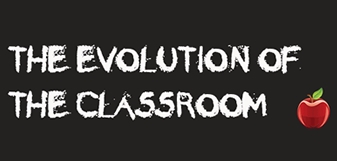
Since the 1900s, life has changed significantly, with advances in technology impacting on everything from entertainment to education.
In particular, the classrooms of today are a world away from those of yesteryear, and even in the last century, the differences are remarkable. In the early 1900s, classroom sizes were double that of today.
Since the 1900s, life has changed significantly, with advances in technology impacting on everything from entertainment to education. In particular, the classrooms of today are a world away from those of yesteryear, and even in the last century, the differences are remarkable.


In the early 1900s, classroom sizes were double that of today. Children would sit in rows of tiered classroom/school tables, similar to a theatre, so they could all easily see the teacher. There was no segregation of students based on age or learning ability, unlike today, and often a whole family of youngsters would be in the same class. The large rooms would have been heated by coal fires, before radiators were invented.


One of the biggest changes in the classroom environment is how technology has shaped the way children learn.The invention of the chalkboard in 1890 heralded a new era for learning, and when the pencil became widespread in 1900, this signalled an end to the inkpot and a new dawn for easier writing. When the radio was introduced in the 1920s, this also provided a new style of learning, while the invention of the overhead projector in 1930 enabled students to view images on a screen. The arrival of the photocopier in the late 1960s made copying learning materials easier in the classroom, and the advent of computers in the 1980s completely revolutionised the classroom environment.These days, learning is increasingly digitalised, with the use of mobile technology and iPads to individualise learning, provide feedback and conduct research. Teachers can use technology to monitor students' work from their desk, without needing to walk around the classroom peering over their
shoulders.


At the turn of the 20th century, school children would sit at wooden desks with benches attached. The desks would have lids that opened, so they could fit their personal belongings inside. The teacher sat at the front of the class behind a large, high desk, and would rarely move away from the desk, or walk around the room. As learning has changed over the years, students nowadays have more flexible classroom seating arrangements, where they move around in groups for various activities. Teachers are also not stuck behind a oversized, intimidating desk, instead they have much more friendly and open teachers desks to help with interactive and mobile learning enabling within the
classroom to create an engaging environment.


Corporal punishment was the norm in schools of yesteryear, with students getting a whack from a cane or slipper for bad behaviour in the classroom. Most countries have banned this extreme method of punishment now, with the UK outlawing its use in public schools in 1986. These days, naughty school children are more likely to receive 'time out' for bad behaviour, or reward charts and stickers to reinforce good behaviour.It wasn't just children that had to follow strict rules and punishment. Female teachers in the early 1900s would risk losing their jobs if they wore bright clothes, dyed their hair or were caught smoking.